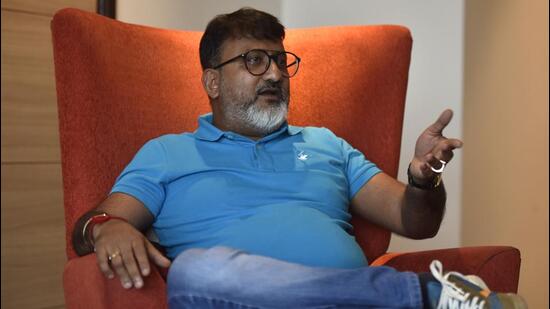Supertech demolition: There will be no damage from vibrations, says Edifice’s Uttkarsh Mehta
When Jet Demolitions imploded Bank of Lisbon in Johannesburg, there was a fully glass studded building seven metres away. I personally witnessed that the blast and not even a single glass pane broke, says the founder partner of Edifice Engineering
Uttkarsh Mehta, is the founding partner of Edifice Engineering. He and partner Jigar Chheda started a small company in 2004 that carried out anchoring, coring, and diamond cutting works -- all processes related to demolitions as well. In 2012, they started Edifice got into full scale demolitions. In the years since, Edifice has carried out over 1,500 demolitions, including four implosions

What is implosion and why was it chosen as the demolition technique?
Implosion is when we make a building or structure fall inwards, unlike explosion where the blast is outward. For any project, we chose the technology depending on three criteria—safety requirements, time availability and viability. When we got the details of the project and visited the site, we envisaged that implosion would be most suitable. Another technology of diamond cutting could have been used but that would have taken over two years as we would have to slowly cut down each column, wall and beam using cranes. And it would also have cost nearly five times more than implosion. The other technology could have been robotics, but that would have caused a lot of noise and there are neighbours in the vicinity. The Supreme Court had already ordered that this project should be done in the shortest possible time and we also had precedence and experience from Kochi (implosion of Maradu flats).
What were the big challenges or risk factors?
Protecting the Aster 2 tower, which is nine metres from the twin towers, and Aster 3 tower, which is right next to it, was the biggest challenge. The gas pipeline was perceived to be a problem but we have always been confident that nothing can happen to it. We are working with experienced partners. When Jet Demolitions imploded Bank of Lisbon in Johannesburg, there was a fully glass studded building seven metres away. I personally witnessed that the blast and not even a single glass pane broke.
What were the obstacles during preparations?
Unlike most other buildings, the twin towers had a lot of shear walls, staircases and lift shafts. These, mainly the shear walls, restrict the fall of a structure and were the biggest hindrances to the implosion. There were also procedural delays.
What quantum of vibrations can we expect and what damage can occur?
The buildings in Delhi-NCR are designed for seismic zone 4-5, as the region experience earthquakes often. The quakes are much stronger than the vibrations from the implosion. We have also conducted simulations and predicted that the impact -- it will be a third of a typical earthquake of measuring one point on the Richter scale. There will be absolutely no damage from vibrations. As additional safety measures, impact cushions, berms and old tyres have been kept in the basement to further absorb the vibrations.



